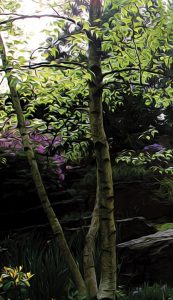 I’m always reading about architecturally designed gardens that are supposedly ‘wild’ and ‘untamed’. Informal, maybe, but wild? Hardly. I mean, architecture and wilderness are fundamentally opposed concepts… aren’t they? I get that there’s an element of illusion involved; I just think it’s kind of misleading, and you can totally tell that’s all carefully engineered if you know what you’re looking at. They’re very nice gardens, mind you. No argument there.
I’m always reading about architecturally designed gardens that are supposedly ‘wild’ and ‘untamed’. Informal, maybe, but wild? Hardly. I mean, architecture and wilderness are fundamentally opposed concepts… aren’t they? I get that there’s an element of illusion involved; I just think it’s kind of misleading, and you can totally tell that’s all carefully engineered if you know what you’re looking at. They’re very nice gardens, mind you. No argument there.
I could be missing the point, I suppose. Maybe it’s not meant to look like, say, an actual jungle, but rather include elements that are allowed to grow in a free-form sort of way: hedges that aren’t formally pruned, and drifts of flowering bulbs allowed to naturalise under a tree. In a tropical climate, it could be blue ginger growing alongside bromeliads in a fernery – something to that effect, anyway.
Or you could have a garden styled after a Mediterranean forest grove, with irregularly shaped bay trees adopting weird shapes amidst puffs of lavender and rosemary, and everything just rambling over itself rather than being stiffly clipped into shape. Add some artfully chosen rocks, and you’d be well on the way to creating a scene straight out of Homer.
The more I contemplate the possibilities, the more I’m coming to understand the appeal of this design ethos. Sure, it’s not real wilderness, but you do get to enjoy some of the benefits of a wild landscape, like see what happens when you don’t prune a shrub or try to keep a spreading plant within the bounds of a garden bed. As well as being an efficient approach to gardening, relative to maintaining expanses of lawns and manicured hedges, it also seems likely to attract more beneficial insects, birds and the like than a formal garden would.
I still take umbrage at present these landscapes as ‘wild’, but I guess it’s all relative.